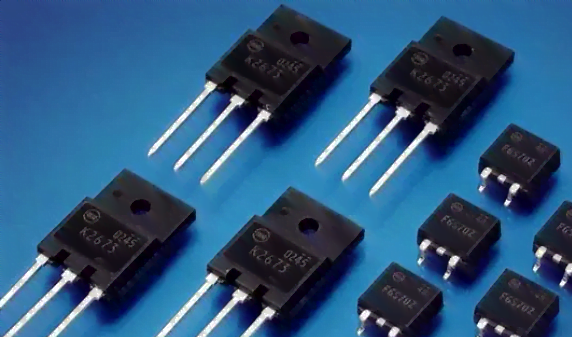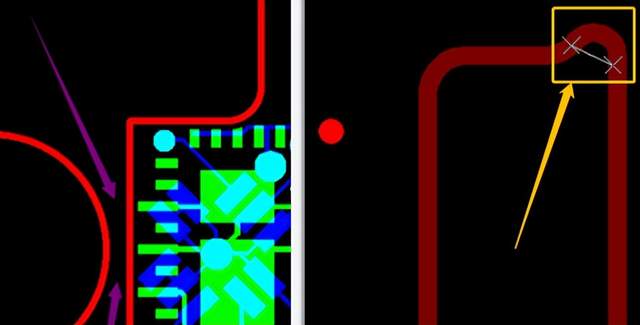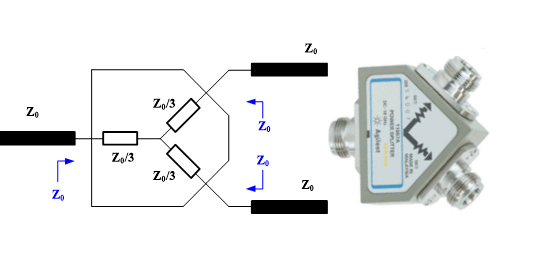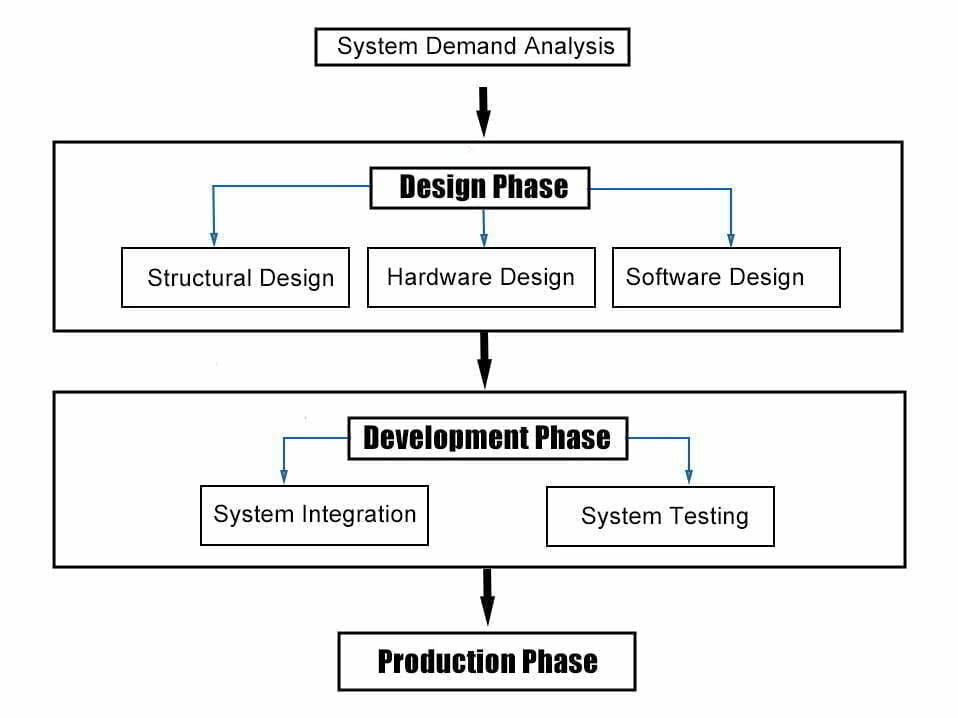What is MOSFET Transistor?
MOSFET, short for Metal-Oxide-Semiconductor Field-Effect Transistor, is an electronic component commonly used in electronic circuits as a switch or amplifier to control the flow of high voltage and high current. It is a type of transistor that is made up of a metal gate, an oxide layer, and a semiconductor channel.
Who invented MOSFET Transistor?
In 1959, D. Kahng and Martin Atalla of Bell Labs revolutionized the world of electronics with their invention of the MOSFET transistor. This breakthrough invention made possible the miniaturization of electronic components, paving the way for the integrated circuit and the modern computer. While the invention itself was revolutionary, the process of its invention was fascinating as well.
Kahng and Atalla began their research into the MOSFET by first studying the properties of metal-oxide-semiconductor (MOS) structures. Using a technique called chemical vapor deposition (CVD), they were able to deposit a thin layer of silicon dioxide onto a silicon substrate. This layer of silicon dioxide acted as an insulator between the two conducting layers of the MOS structure.
The next step in the process was to make the MOSFET. By introducing a dopant into the insulating layer, Kahng and Atalla were able to create a channel between the two conducting layers. This channel was then connected to a gate, which allowed electricity to flow through the MOSFET when triggered. This made it possible to control the flow of current through the transistor with a voltage input.
Finally, Kahng and Atalla tested their invention to ensure that it functioned properly. They found that the MOSFET was capable of switching current on and off quickly, which made it ideal for use in computers and other electronic devices. Thanks to their research and hard work, the MOSFET transistor has become an integral part of modern electronics.
MOSFET Structure
A metal-oxide-semiconductor field-effect transistor (MOSFET) consists of a metal gate, an oxide layer, and a semiconductor, with the oxide layer typically made of silicon dioxide. The gate material is usually replaced with polycrystalline silicon instead of metal. The structure forms a capacitor, with the oxide layer serving as the dielectric and the capacitance determined by the oxide layer’s thickness and dielectric constant of silicon dioxide. The polycrystalline silicon gate and the silicon semiconductor form the two terminals of the MOS capacitor. In addition to the capacitor structure, a complete MOSFET structure includes a source and a drain to provide majority carriers and to accept them, respectively.
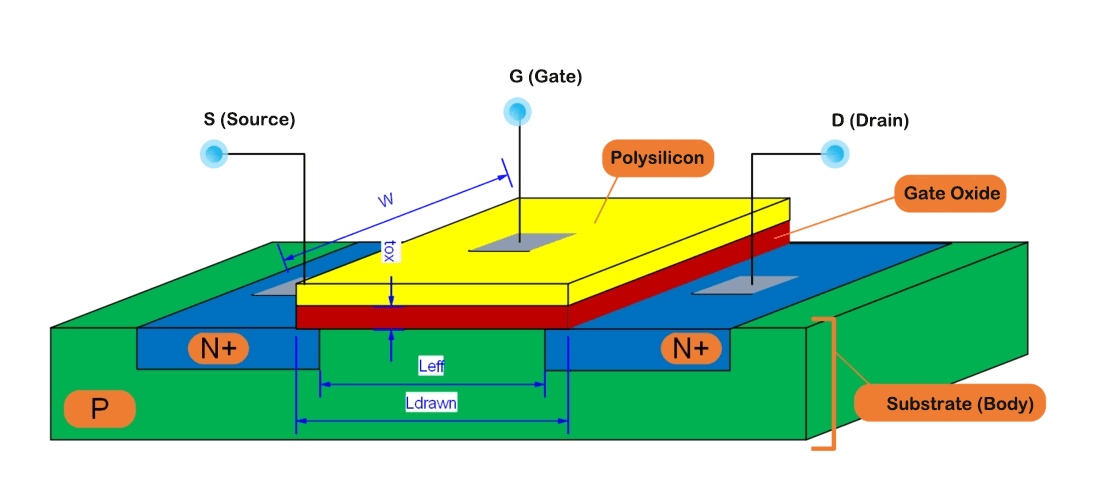
MOSFET Circuit Symbol
The circuit symbol for MOSFET transistor commonly used in electronic circuits consists of a vertical line representing the channel, two parallel lines next to the channel representing the source and drain, and a perpendicular line on the left representing the gate. The channel line may also be represented by a dashed line to differentiate between enhancement-mode and depletion-mode MOSFETs.

MOSFET transistors are four-terminal devices, consisting of the source, drain, gate, and bulk or body terminals. The direction of the arrow extending from the channel to the bulk terminal indicates whether the MOSFET is a p-type or n-type device, with the arrow always pointing from the P-side to the N-side. If the arrow points from the channel to the gate, it represents a p-type MOSFET or PMOS, while the opposite direction represents an n-type MOSFET or NMOS. In integrated circuits, the bulk terminal is commonly shared, so its polarity is not indicated, while a circle is often added to the gate terminal of PMOS to distinguish it from NMOS.
How MOSFET Transistor Works?
The basic working principle of a metal-oxide-semiconductor field-effect transistor (MOSFET) is to control the formation and conductivity of a channel by applying a voltage to the gate electrode, thereby regulating the current flowing between the drain and source electrodes. The MOSFET consists of three electrodes: the gate, source, and drain. There is an insulating oxide layer between the gate and source electrodes, and the channel is formed beneath this layer on the semiconductor surface.
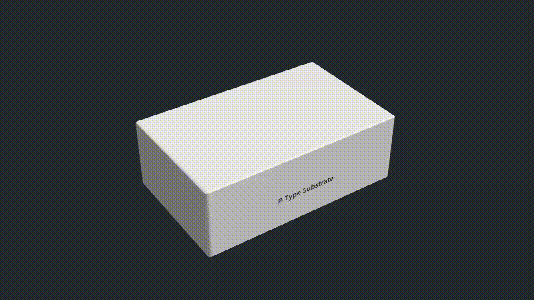
When a positive voltage is applied to the gate, the holes in the semiconductor surface beneath the gate are repelled, creating a negatively charged inversion layer. The inversion layer has a higher electron concentration than the hole concentration, forming an n-type conducting layer called the channel. When a voltage is applied between the drain and source, current flows through the channel to the drain. The conductivity and charge density of the channel can be modulated by the magnitude and polarity of the gate voltage, enabling the MOSFET to function as a controllable current switch.
Types of MOSFET
According to the polarity of its channel, MOSFET transistors can be divided into: N-channel mosfet and P-channel mosfet. In addition, according to the gate voltage amplitude, it can be divided into: depletion type and enhancement type.
N-Channel Enhancement MOSFET
A N-Channel Enhancement MOSFET is commonly used in electronic circuits for switching and amplification purposes. It is called an enhancement MOSFET because it requires a positive voltage at the gate to turn on the channel, and it is called N-Channel because it has a negative carrier type.
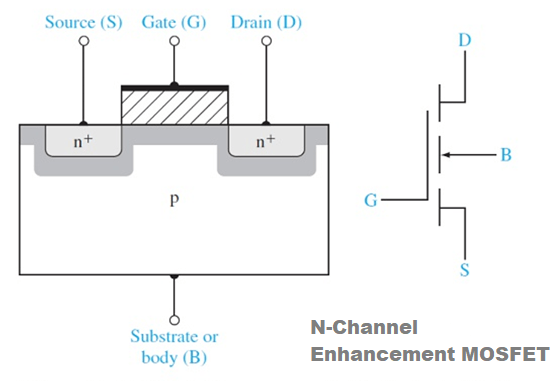
N-Channel Depletion MOSFET
An N-Channel Depletion MOSFET is made up of layers of semiconductive materials that have been doped with specific impurities to create a channel that carries current. The channel is already formed when no voltage is applied to the gate terminal. This means that the MOSFET is in its “depletion” mode when no power is applied. When a voltage is applied to the gate, it reduces the depletion region, allowing current to flow through the channel.
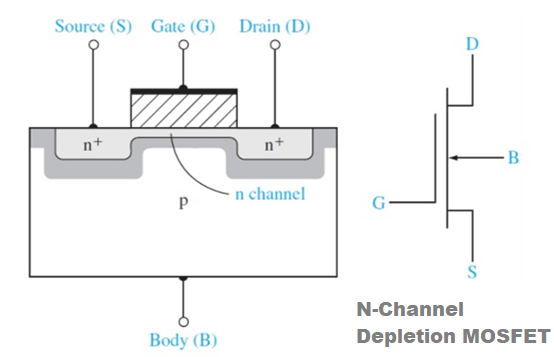
P-Channel Enhancement MOSFET
A P-Channel Enhancement MOSFET is a type of MOSFET that uses a P-channel substrate to allow the flow of electrons between the source and drain terminals. When a voltage is applied to the gate terminal of a P-Channel Enhancement MOSFET, it creates an electric field that attracts positively charged holes (as opposed to negatively charged electrons in an N-channel MOSFET) to the channel, allowing current to flow between the source and drain terminals.

P-Channel Depletion MOSFET
A P-Channel depletion MOSFET operates by controlling the flow of negative charge carriers (electrons) in a semiconductor channel. Unlike N-Channel MOSFETs, which are built with a positively charged gate that attracts negative charge carriers, P-Channel MOSFETs are built with a negatively charged gate that repels positive charge carriers (holes). In a depletion MOSFET, the semiconductor channel is doped with impurities that create a depletion region, which acts as a resistive barrier to current flow. By applying a voltage to the gate, the depletion region can be widened or narrowed, controlling the flow of current through the channel.
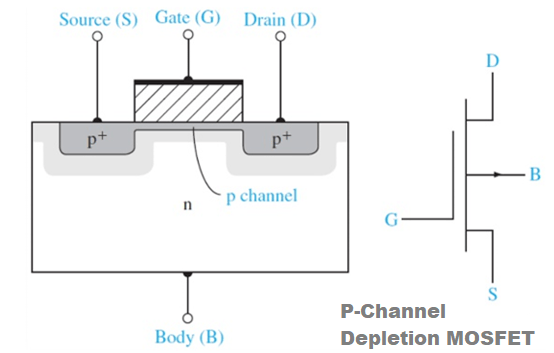
Where MOSFET is Used?
Semiconductor devices known as MOSFET transistors are extensively utilized in automotive, industrial, and communication systems. Within the field of automotive electronics, power MOSFET transistors serve as common switching devices in electronic control units and power converters for modern electric vehicles. Additionally, MOSFET transistors can also be used as switches or amplifiers in various applications, such as power supplies, motor controls, voltage regulators, microcontrollers, digital logic circuits, and audio amplifiers.
Specifically, MOSFET transistors can be used in computer and television power supplies to convert high-voltage AC power into low-voltage DC power; in motor control circuits to regulate the speed of motors; in audio amplifiers to amplify low-level signals to high-level signals; and in solar inverters, they are often used to convert DC power generated by solar panels into AC power for residential and commercial use.
In recent years, with the improvement of performance of MOSFET transistors, more and more analog signal processing integrated circuits are also adopting MOSFET transistors, in addition to the digital signal processing field (such as microprocessors and microcontrollers). In digital circuits, MOSFET transistors are mainly used in the invention of complementary metal-oxide-semiconductor logic circuits, which have almost no static power loss and can save current and power consumption. In CMOS logic circuits, each logic gate driver and each stage of logic gates only need to face the same MOSFET transistor gate, making them easier to drive. In analog circuits, some performance parameters of MOSFET transistors in circuit design have been greatly improved, such as transconductance, current driving force, and noise. Therefore, MOSFET transistors are now widely used in analog circuits, such as amplifiers, filters, oscillators, power amplifiers, and switch mode power supplies.
MOSFET Vs BJT
There’re many difference between the MOSFET transistor and BJT transistor, here’s a comparision table for them.
| No. | Characteristics | BJT | MOSFET |
|---|---|---|---|
| 1 | Transistor Type | Bipolar Junction Transistor | Metal Oxide Semiconductor Field-Effect Transistor |
| 2 | Classification | NPN BJT and PNP BJT | P-channel MOSFET and N-channel MOSFET |
| 3 | Port | Base, Emitter, Collector | Gate, Source, Drain |
| 4 | Symbol |  |  |
| 5 | Charge Carrier | Both electrons and holes serve as charge carriers in BJT | Either electrons or holes serve as charge carriers in MOSFET |
| 6 | Control Mode | current-controlled | oltage-controlled |
| 7 | Input Current | milliamps/microamps | picoamps |
| 8 | Switching Speed | BJT is lower: maximum switching speed is close to 100KHz | MOSFET is higher: maximum switching frequency is 300KHz |
| 9 | Input Impedance | low | high |
| 10 | Output Impedance | low | medium |
| 11 | Temperature Coefficient | BJT has a negative temperature coefficient and cannot be connected in parallel | MOSFET has a positive temperature coefficient and can be connected in parallel |
| 12 | Power Consumption | high | low |
| 13 | Frequency Response | poor | good |
| 14 | Current Gain | BJT has low and unstable current gain: the gain can decrease once the collector current increases. If the temperature increases, the gain can also increase | MOSFET has high current gain and is almost stable for changing drain current |
| 15 | Secondary breakdown | BJT has a second breakdown limit | MOSFET has a safe operating area similar to BJT but does not have a second breakdown limit |
| 16 | Static Electricity | Static discharge is not a problem in BJT | Static discharge can be a problem in MOSFET and can lead to other issues |
| 17 | Cost | cheaper | more expensive |
| 18 | Application | low-current applications such as amplifiers, oscillators, and constant current circuits | high-current applications such as power supplies and low-voltage high-frequency applications |

